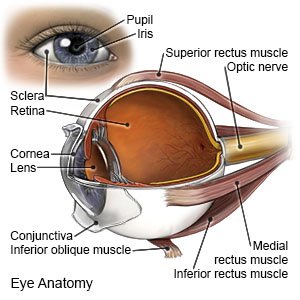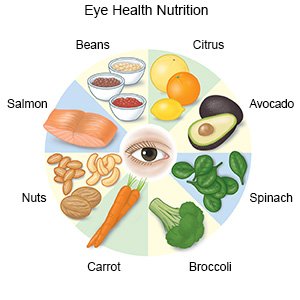Panretinal Photocoagulation
Medically reviewed by Drugs.com. Last updated on Jul 7, 2024.
Panretinal photocoagulation (PRP) is a procedure used to treat leaking blood vessels in the retina. Certain conditions weaken the blood vessels, causing them to leak. Proliferative diabetic retinopathy is the most common condition PRP is used to treat. This condition causes the retina to create new, weak blood vessels that also leak. PRP makes hundreds of tiny burns that seal leaking vessels on the peripheral (outer) part of the retina. New vessels are also prevented from growing. PRP will not give you back lost vision, but it can keep vision loss from getting worse.
 |
DISCHARGE INSTRUCTIONS:
Call your local emergency number (911 in the US) if:
- You suddenly cannot see.
Seek care immediately if:
- Your vision seems covered by a dark curtain.
- You have severe eye pain.
- You have more trouble seeing.
Call your doctor or ophthalmologist if:
- You have new or worsening vision problems.
- You continue to have a headache after 2 days.
- You have questions or concerns about your condition or care.
Medicines:
- Acetaminophen decreases pain and fever. It is available without a doctor's order. Ask how much to take and how often to take it. Follow directions. Read the labels of all other medicines you are using to see if they also contain acetaminophen, or ask your doctor or pharmacist. Acetaminophen can cause liver damage if not taken correctly.
- Take your medicine as directed. Contact your healthcare provider if you think your medicine is not helping or if you have side effects. Tell your provider if you are allergic to any medicine. Keep a list of the medicines, vitamins, and herbs you take. Include the amounts, and when and why you take them. Bring the list or the pill bottles to follow-up visits. Carry your medicine list with you in case of an emergency.
Do not drive, as directed:
Your vision may be affected for several days. You may not be able to see out of the sides of your eyes (peripheral vision). This can make safe driving difficult. Ask someone to drive you until your healthcare provider says it is okay to drive.
Protect your vision:
- Get an eye exam as often as directed. Eye exams are usually done every 2 to 3 months to monitor proliferative diabetic retinopathy. If you have diabetic macular edema, you may need exams every 4 to 6 weeks. Early diagnosis and treatment of eye problems may prevent permanent vision damage.
- Manage health conditions that can cause vision problems. Common examples include diabetes, high blood pressure, and high cholesterol. Follow up with healthcare providers who manage these conditions.
- Wear sunglasses with ultraviolet (UV) light protection. UV light from the sun can damage your eyes. It can increase your risk for vision loss.
- Eat foods that contain eye-healthy nutrients. Healthy nutrients include vitamin A, vitamin C, vitamin E, omega-3 fatty acids, lutein, and zeaxanthin. They can be found in foods such as spinach, peanuts, salmon, collard greens, avocados, squash, eggs, and blueberries. Ask your healthcare provider for a full list of foods that contain eye-healthy nutrients. You may also need to take a vitamin or supplement to help you get enough of these nutrients.

- Exercise as directed. Ask your healthcare provider about the best exercise plan for you. He or she will tell you how to control your blood sugar level when you exercise. You may need to check the level more often during exercise. Bring a snack with you when you exercise in case your blood sugar level gets too low.

- Do not smoke. Nicotine can damage blood vessels in your eyes. Do not use e-cigarettes or smokeless tobacco in place of cigarettes or to help you quit. They still contain nicotine. Ask your healthcare provider for information if you currently smoke and need help to quit.
Follow up with your doctor or ophthalmologist as directed:
Write down your questions so you remember to ask them during your visits.
© Copyright Merative 2024 Information is for End User's use only and may not be sold, redistributed or otherwise used for commercial purposes.
The above information is an educational aid only. It is not intended as medical advice for individual conditions or treatments. Talk to your doctor, nurse or pharmacist before following any medical regimen to see if it is safe and effective for you.
Further information
Always consult your healthcare provider to ensure the information displayed on this page applies to your personal circumstances.
